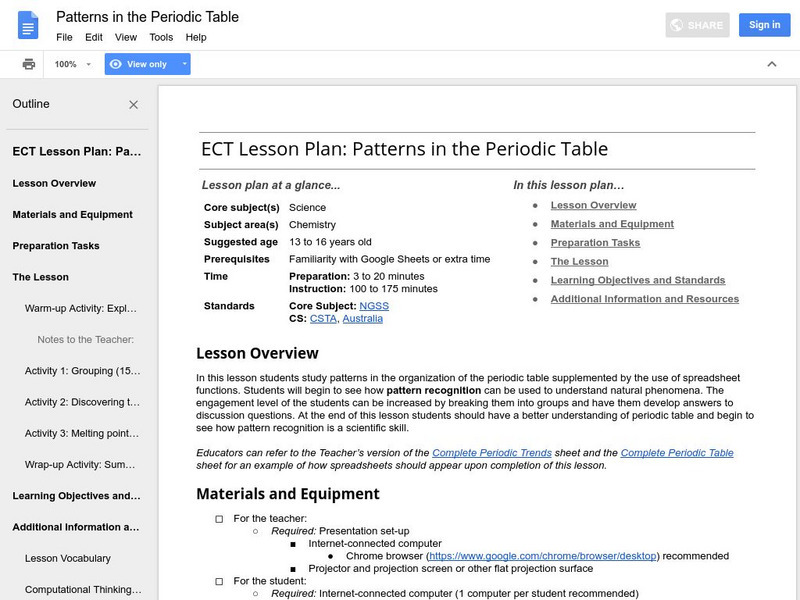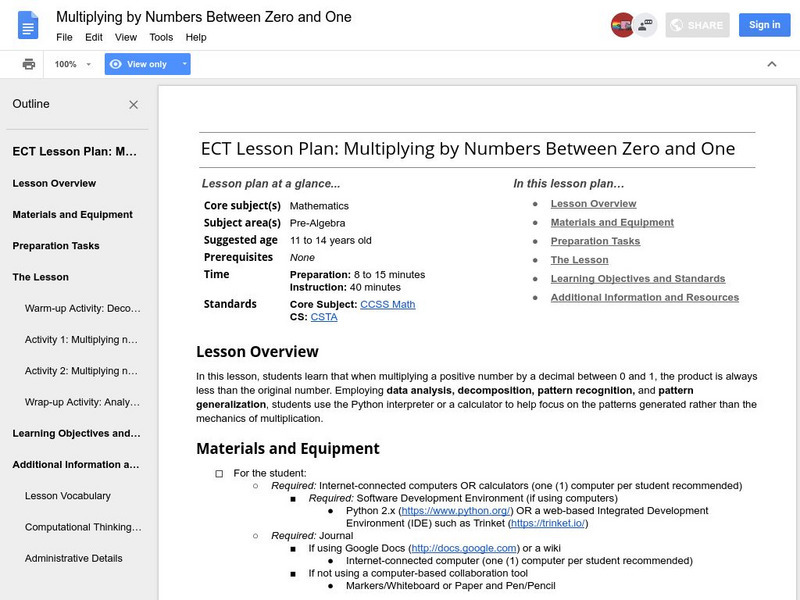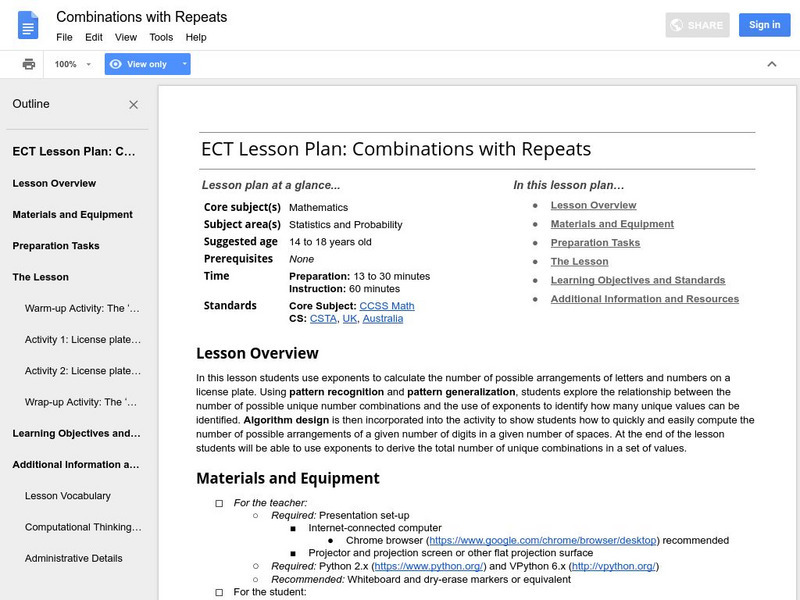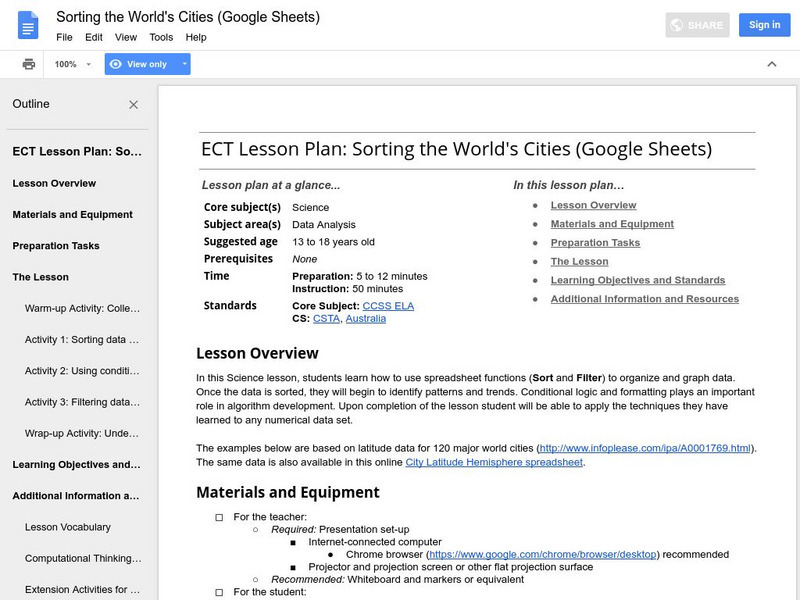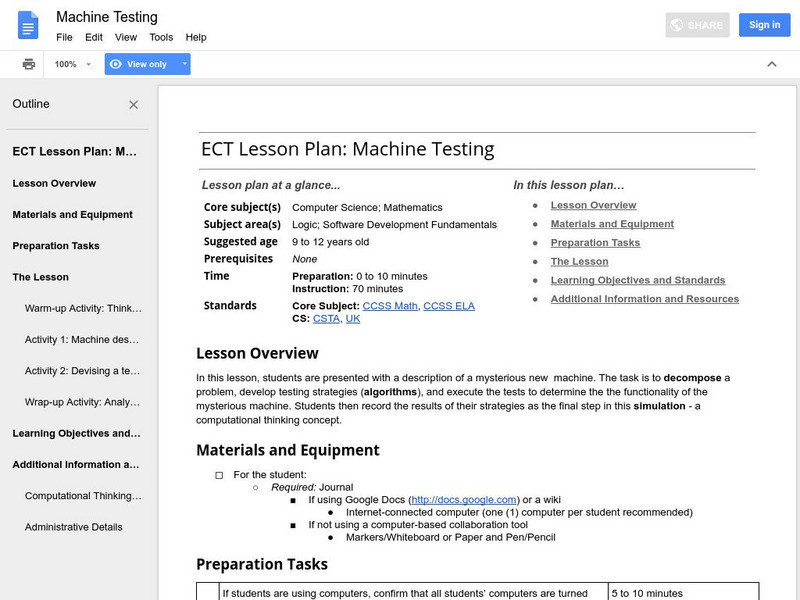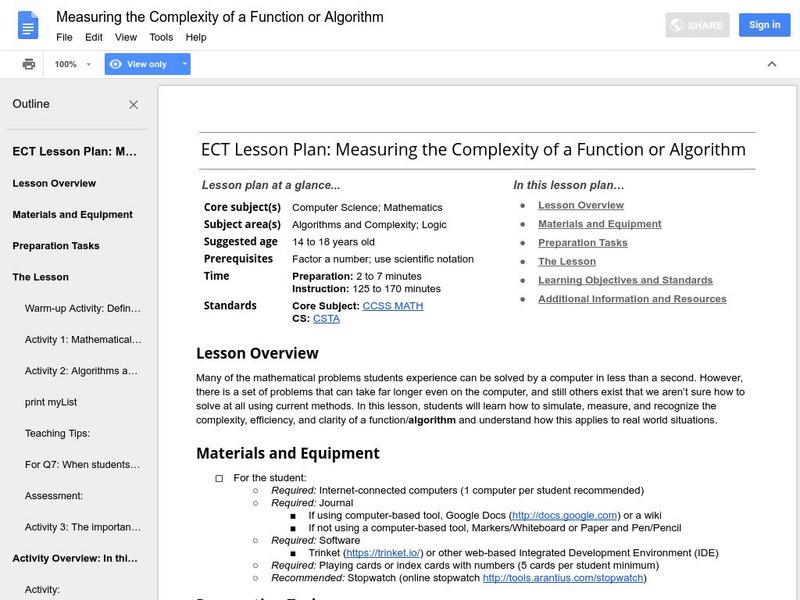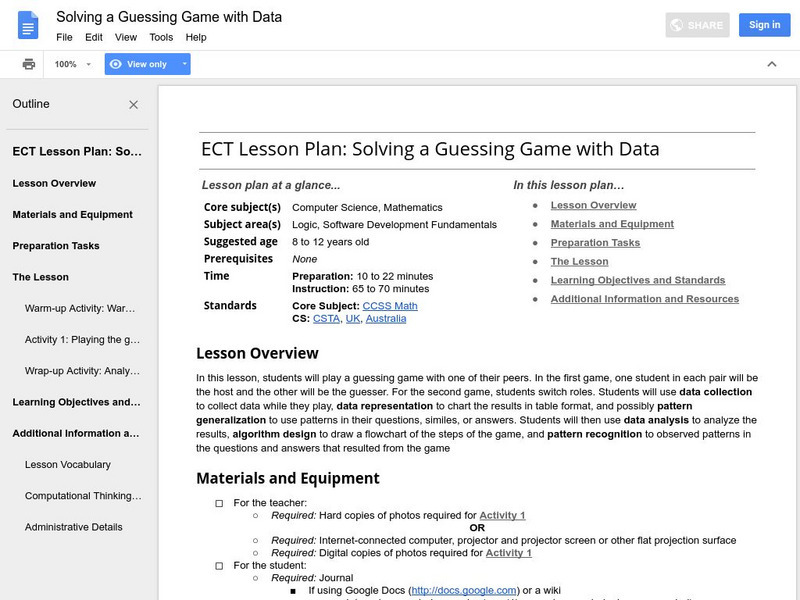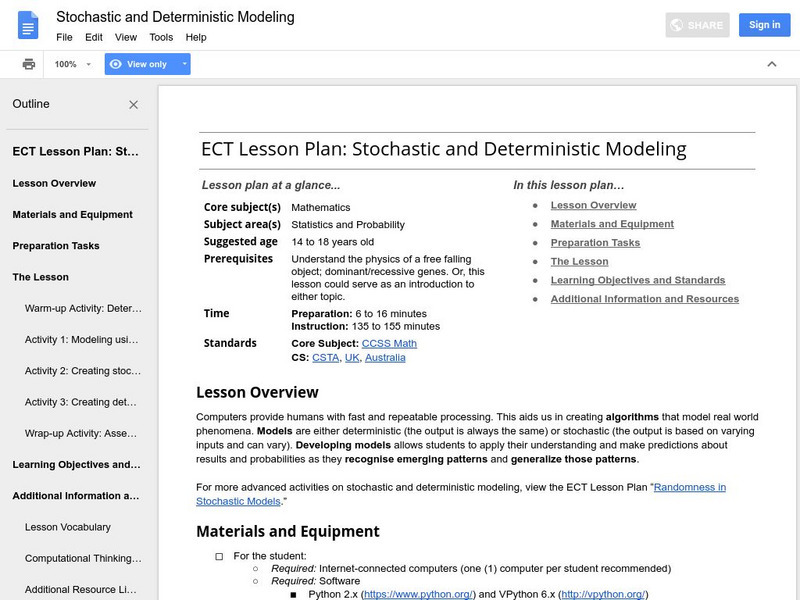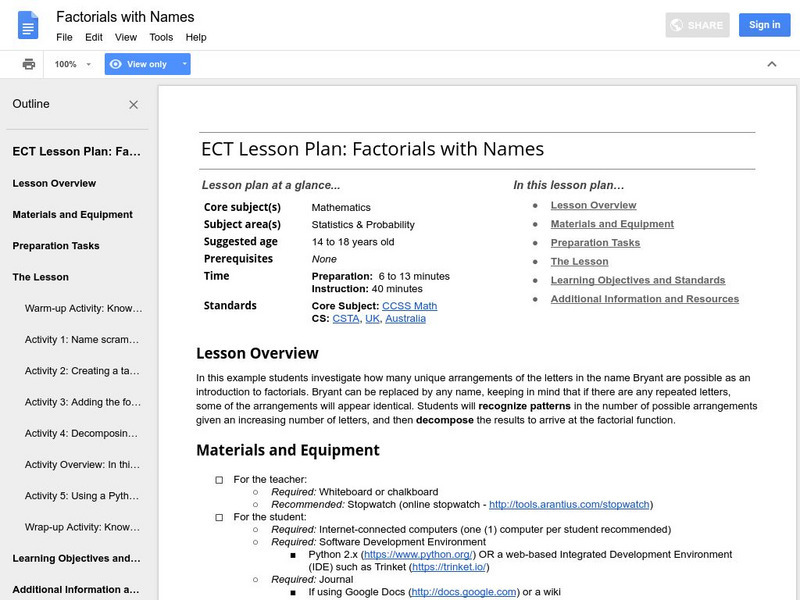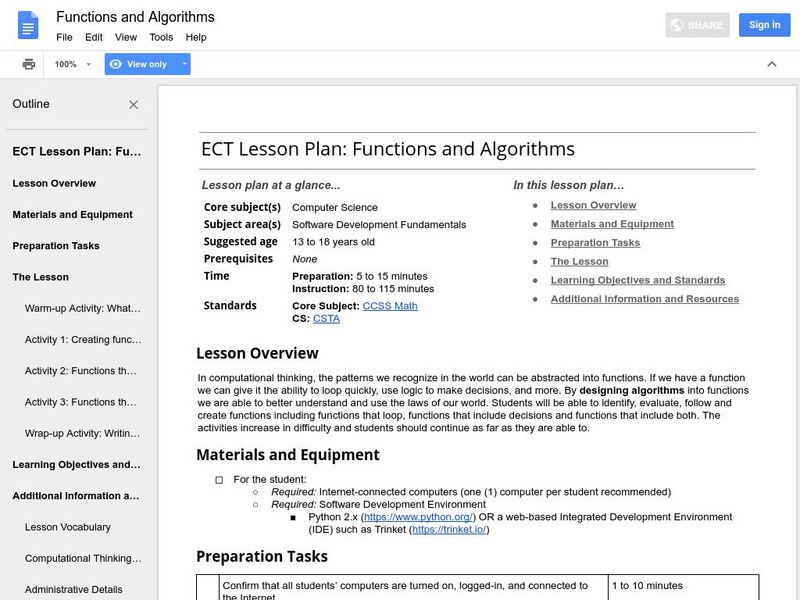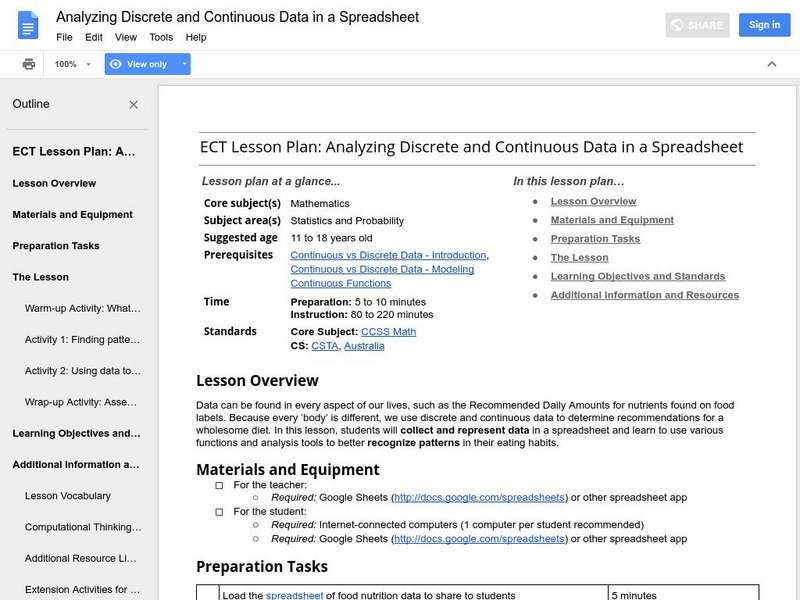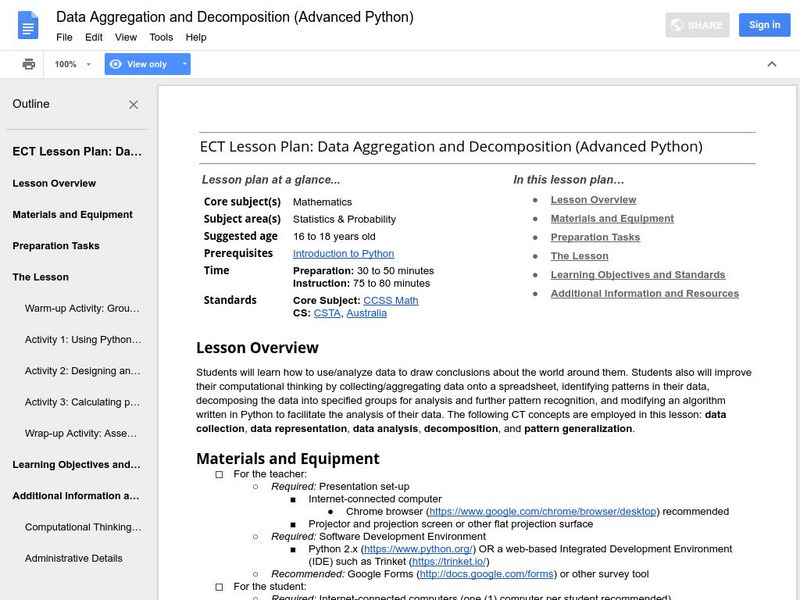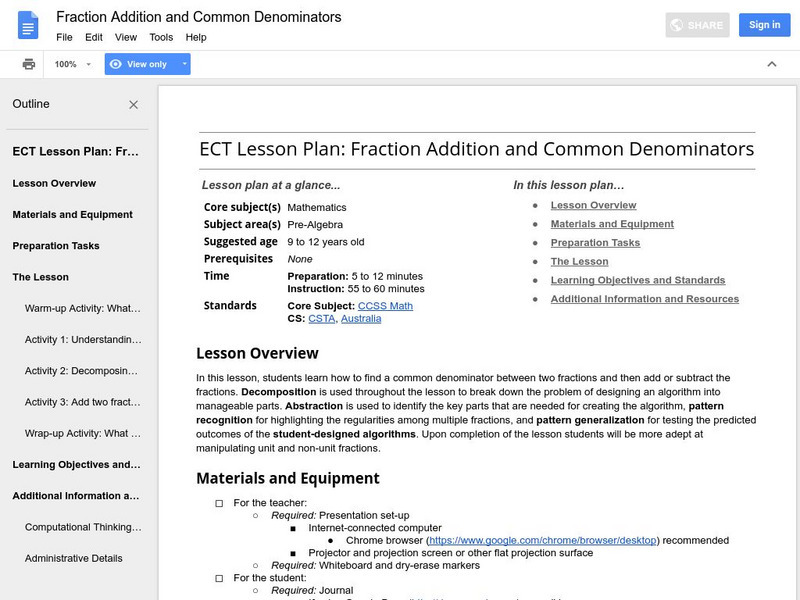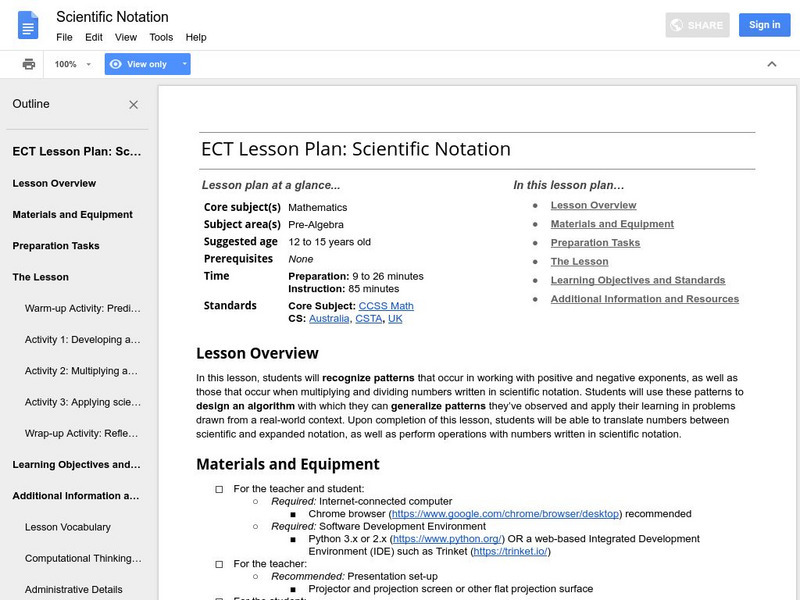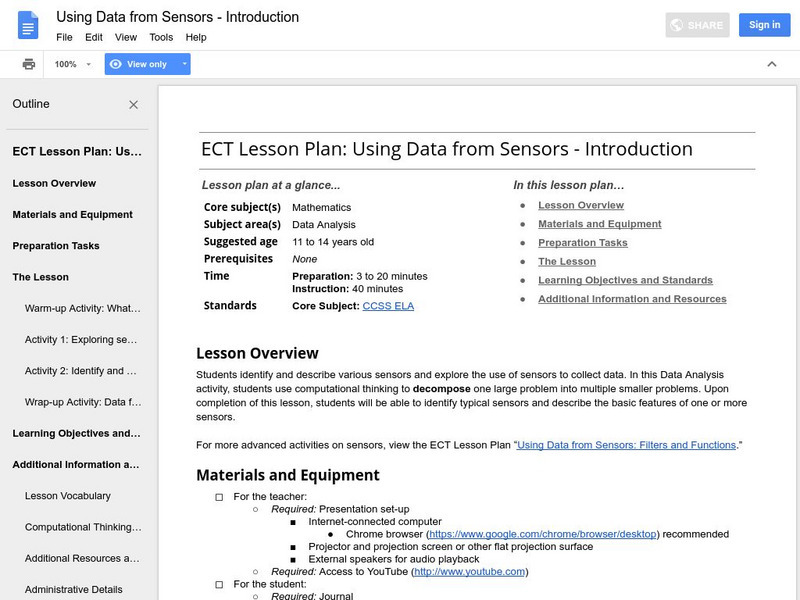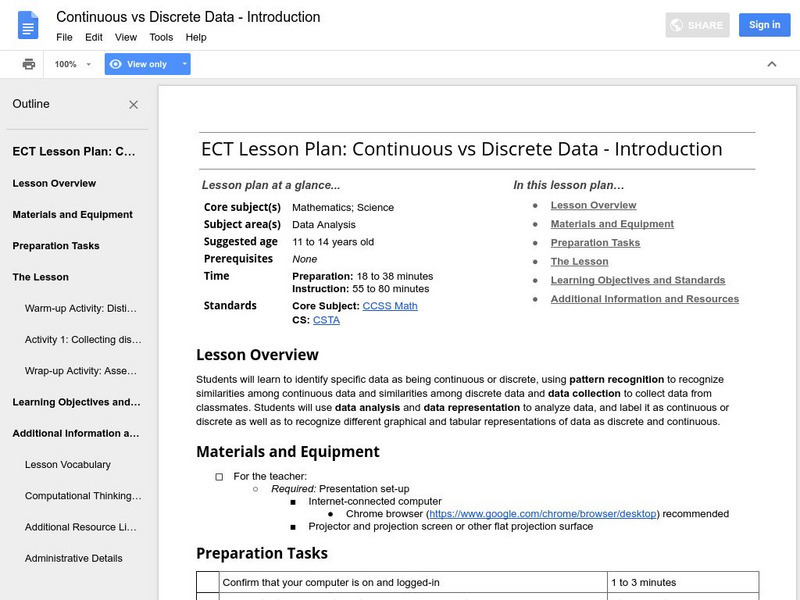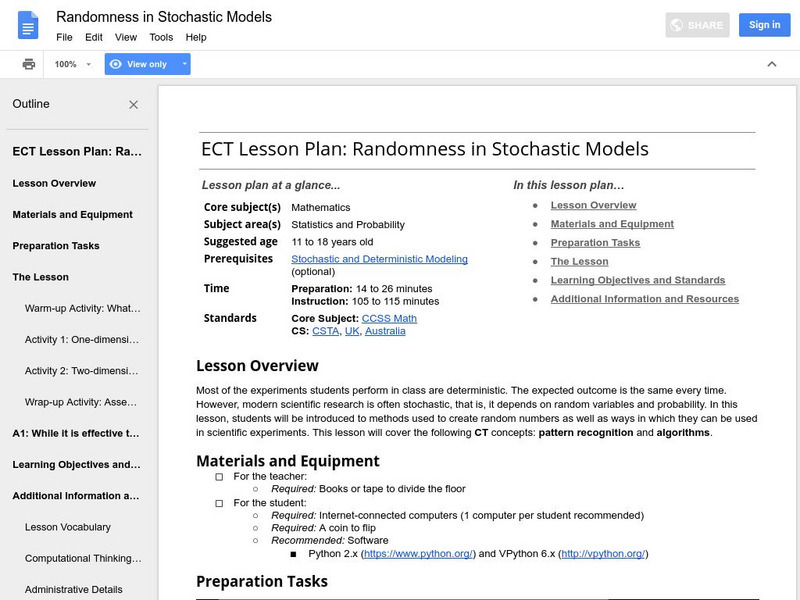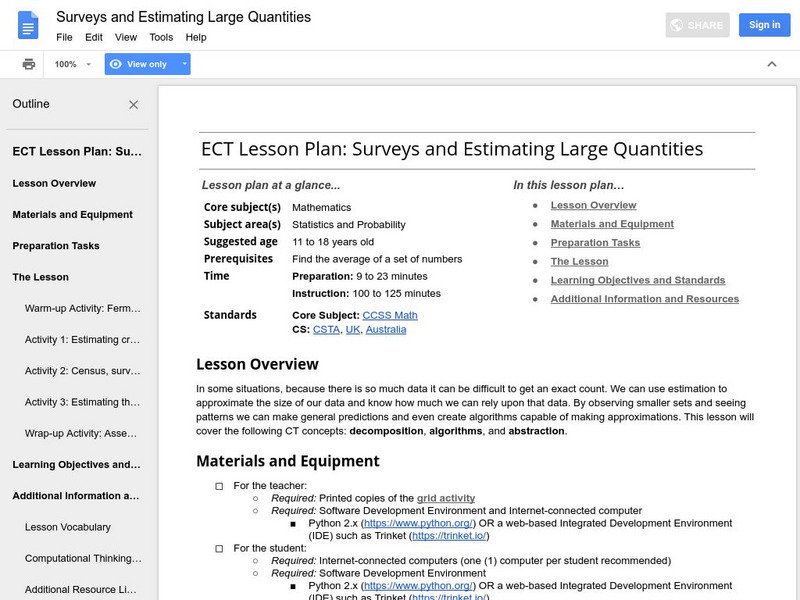Google
Google for Education: Patterns in the Periodic Table
Students study trends in the periodic table of elements, supplemented by the use of spreadsheet functions. The spreadsheet functions presented can be used on any data set.
Google
Google for Education: Multiplying by Numbers Between Zero and One
Example problems practicing multiplying by zero and one where students apply and extend previous understandings of multiplication and division of fractions.
Google
Google for Education: Finding Patterns in Spelling Errors and History
In this instructional activity, young scholars analyze spelling errors and large sets of data to find patterns, develop abstractions, and discover how large amounts of data can tell us much about our society.
Google
Google for Education: Percent Change
Students analyze proportional relationships and use them to solve real-world and mathematical problems. Here, look for patterns to understand and solve percent change problems.
Google
Google for Education: Combinations With Repeats
In this class activity learners learn how exponents can be used to calculate the number of possible arrangements of letters and numbers on a license plate.
Google
Google for Education: Sorting the World's Cities (Excel)
Young scholars learn to organize, sort, and display data in a Microsoft Excel spreadsheet using latitude data for 120 major world cities.
Google
Google for Education: Machine Testing
Students test the functionality of a mysterious new machine whose operations are described to the class, but cannot be opened up for further investigation. Students come up with a testing strategy for this machine, test it according to...
Google
Google for Education: Measuring Complexity of Function or Algorithm
In this lesson, students learn how to measure the complexity of the function or algorithm in a math problem and understand how this applies to real world situations.
Google
Google for Education: Solving a Guessing Game With Data
In this exercise learners play a guessing game trying to guess what an object is. They use logical reasoning and learn about the need for efficient searching by analyzing the questions and responses to reduce the steps necessary to guess...
Google
Google for Education: Stochastic and Deterministic Modeling
Computers provide humans with fast and repeatable processing to create algorithms that model real world phenomena. Developing models allows young scholars to apply their understanding and make predictions.
Google
Google for Education: Factorials With Names
Students investigate how many unique arrangements of the letters in the name Bryant are possible as an introduction to factorials. Bryant can be replaced by any name, keeping in mind that if there are any repeated letters some of the...
Google
Google for Education: Functions and Algorithms
In computational thinking, patterns in the world can be abstracted into functions. Learners learn to develop algorithms into functions so that they can better understand and utilize the laws of our world.
Google
Google for Education: Applyng Discrete and Continuous Data in a Spreadsheet
Students collect data in a spreadsheet and learn to use various functions and analysis tools to better see patterns in their eating habits.
Google
Google for Education: Data Aggregation and Decomposition (Python)
Young scholars learn how to use and analyze data to draw conclusions about information collected from classmates. Then they use computational thinking by collecting and aggregating data onto a spreadsheet, identifying patterns in their...
Google
Google for Education: Fraction Addition and Common Denominators
Students learn how to find a common denominator between two fractions and then add or subtract the fractions. Decomposition is used to identify patterns in fractions that are relatively easy to visualize, and apply these patterns to...
Google
Google for Education: What Is Data
The purpose of this lesson plan is to show learners what data is and how prevalent it is in their lives They also learn how to use data to make informed decisions. These activities are an excellent way to introduce the year as students...
Google
Google for Education: Application and Modeling of Standard Deviation
Students examine graphs of data using each of the measures of central tendency to determine when to use each in order to get a true overview of the data.
Google
Google for Education: Scientific Notation
Practice problems where students use the Python software to determine which way tho move decimal points when multiplying by exponents.
Google
Google for Education: Using Data From Sensors
Students analyze data gathered from sensors and develop filtering algorithms for anomalies and outliers, then use these algorithms to make decisions on sensor data as it is being collected.
Google
Google for Education: Continuous vs Discrete Data
When working with data, it is important to know whether it is continuous or discrete, as this will determine what calculations can be applied and what information can be extracted from it. Here, students to distinguish between continuous...
Google
Google for Education: Randomness in Stochastic Models
In this lesson, students are introduced to methods used to create random numbers as well as ways in which they can be used in scientific experiments.
Google
Google for Education: Sorting the World's Cities (Python)
The second of two similar lessons where students learn how a Python program can organize and sort data. When taught in conjunction with Sorting the World's Cities with Excel, students make the connection between writing a program and...
Google
Google for Education: Writing a Story
In this activity, student storytellers write a story with each group member writing one chapter based on a set of story points. After all the members have come up with their chapters independently, the group collaborates to make the...
Google
Google for Education: Surveys and Estimating Large Quantities
Students use estimation to approximate the size of a large set of data. By observing smaller sets and seeing patterns they make general predictions and even create algorithms capable of making approximations.
